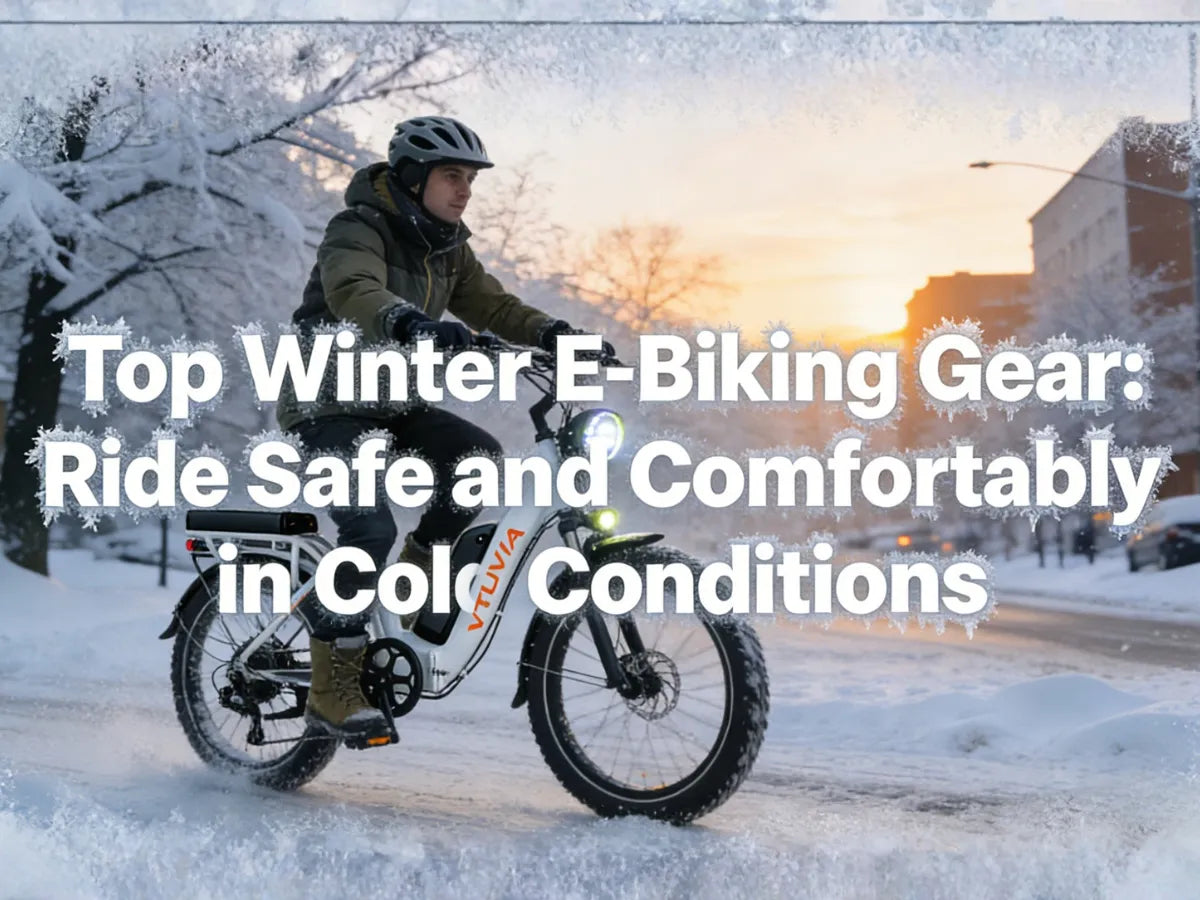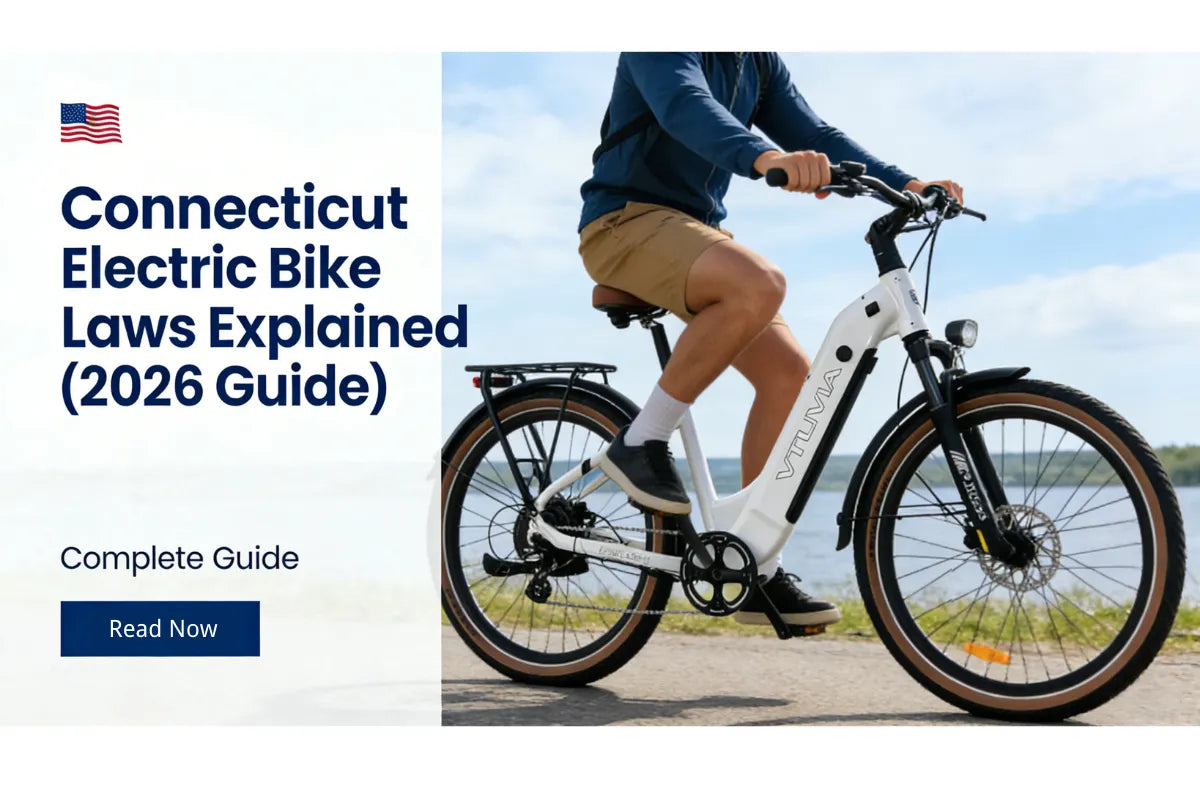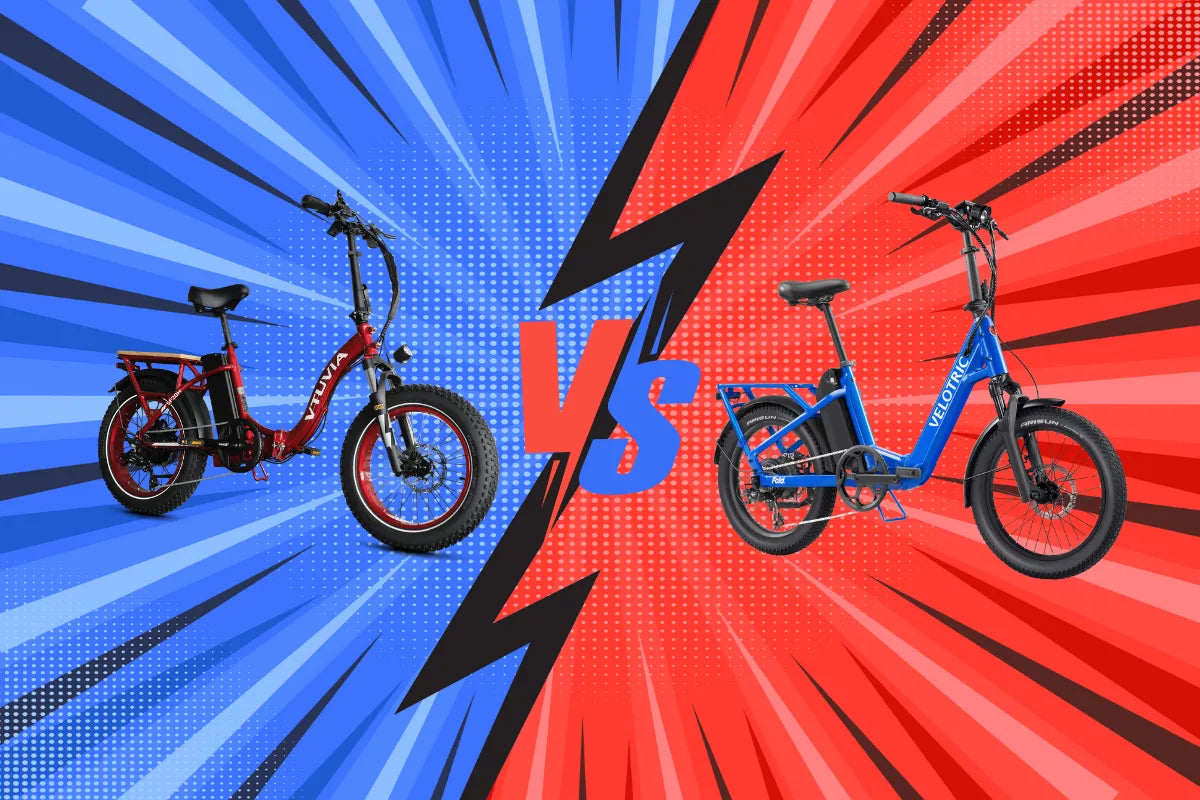Executive summary (TL;DR)
- Most everyday electric bikes are designed to assist up to 20–28 mph depending on class and jurisdiction.
- Actual speed depends on motor/controller limits, rider weight, gearing, terrain, battery and aerodynamics — not just motor wattage.
- You should never bypass speed limiters or perform illegal/warranty-voiding power hacks — they carry legal, safety, and insurance risks. See What not to do below for safer alternatives.
- Safe upgrades (better tires, tune-up, lighter accessories, correct tire pressure, gearing choices) can give modest but meaningful speed/efficiency gains without breaking the law.
Key references for legal context: U.S. federal/CPSC definition and the common U.S. three-class system, EU pedelec rules and speed-pedelec (S-pedelec) regulation.
Why this matters: speed vs safety vs legality
Speed is part practical (reduce commute time) and part recreational (thrill). But street rules, insurance, and public safety all hinge on whether a bike stays within regulated limits. Exceeding those limits can change an apparently harmless eBike into a regulated motor vehicle with licensing, registration and insurance obligations.
Practical takeaway: If you want a faster on-road experience, the safest lawful route is to buy a model designed for the higher speed class (e.g., a Class 3 eBike or a certified speed-pedelec where permitted), or use private/closed track spaces for high-speed runs.
What the law actually says — quick global snapshot
United States — federal baseline (CPSC) and the common three-class system
The U.S. Consumer Product Safety Commission defines a “low-speed electric bicycle” for consumer product safety purposes as a bicycle with operable pedals, a motor of less than 750 watts (1 h.p.), and a top motor-powered speed under 20 mph on a paved level surface for a 170 lb rider. That federal definition governs consumer product safety standards, but actual road use and access rules are set by states and local jurisdictions. :contentReference[oaicite:0]{index=0}
In practical terms, many U.S. jurisdictions use the three-class framework:
| Class | Assist type | Typical motor-assist top speed | Throttle allowed? |
|---|---|---|---|
| Class 1 | Pedal Assist (PAS) | Up to 20 mph | No |
| Class 2 | Throttle or PAS | Up to 20 mph | Yes |
| Class 3 | Pedal Assist only | Up to 28 mph | No (in many places) |
Sources and practical summaries of the class system are widely used by regulators and industry.
European Union — pedelecs and S-pedelecs
In the EU, a standard pedelec is limited to 250W continuous motor power and must cut out at 25 km/h (≈15.5 mph) and typically only assists while pedaling; these are treated as bicycles in most member states. Faster 'speed pedelecs' (S-pedelecs) provide assistance up to 45 km/h (≈28 mph) and are legally classified more like mopeds—requiring insurance, registration, and often a license. Rules vary by country. :contentReference[oaicite:2]{index=2}
Local rules change—always check
Local laws (state, county, parks, trail authorities) may add restrictions (helmets, minimum age, permitted paths). For example, some localities restrict throttle-equipped bikes in bike lanes or on multi-use trails. Recent local ordinances in U.S. counties have tightened rules on youth use and modification; keep an eye on local council pages and transport departments. :contentReference[oaicite:3]{index=3}
Real-world speed ranges — what riders actually see
Below are realistic speed bands and what to expect in everyday riding:
- Urban commuter / casual ride: typical assisted cruising 12–20 mph (≈19–32 km/h).
- Performance / Class 3: assisted up to ~28 mph (≈45 km/h) — popular for fast commuters on roads where permitted.
- High-power off-road or modified builds: 30–60+ mph are possible but fall into different legal categories (motorcycles/mopeds) and are not street-legal as bicycles in most jurisdictions.
What affects top speed (short list)
- Motor/controller limit (governor).
- Battery voltage & state of charge.
- Rider weight + cargo.
- Gearing and wheel diameter.
- Terrain (slope), wind resistance, and tire rolling resistance.
Important: a common misbelief is “more watts = faster top speed.” In reality, greater wattage usually translates to better acceleration and hill-climbing; top speed is often capped by controller settings or gearing.
Technical deep dive: what really determines top speed
Motor, controller, and gearing
Motor output (watts) describes the power the motor can deliver; many consumer eBikes use 250W–750W motors. Motor wattage affects how quickly you can reach a given speed and how well you climb, but a controller or a governor often limits maximum assisted speed — meaning identical wattage motors can be set to different top speeds by firmware.
Battery voltage and discharge capacity
Batteries rated at higher nominal voltages (e.g., 48V vs 36V) can sustain higher motor power outputs for longer, improving high-load performance. But higher voltage requires compatible motor/controller hardware. Battery state-of-charge also impacts the motor's sustained output.
Gearing and wheel size
Gearing sets the relationship between motor RPM and wheel RPM. A lower gear helps acceleration and hill climbs; a higher gear helps achieve higher top speed for a given motor RPM — within the controller’s limit. Wheel diameter also translates RPM to forward speed.
Weight, aero, and rolling resistance
Rider mass is one of the biggest real-world determinants of top speed. Aerodynamic drag grows with the square of speed, so riding posture and accessories (panniers, racks) noticeably affect sustainable speeds. Fat tires add comfort and traction but increase rolling resistance.
Safe & legal upgrades that actually improve speed/efficiency
Below are upgrade paths ordered by cost/complexity and legal safety. These changes are generally legal and maintain your bike's classification.
Beginner (low cost, high ROI)
- Optimize tire choice: Swap heavy knobby tires for lower-rolling-resistance urban tires if you mostly ride pavement (~1–2 mph potential improvement on flat pavement). Choose reputable tire models and watch ply/weight ratings.
- Set correct tire pressure: Follow tire sidewall specs; higher pressure within safe limits reduces rolling resistance for the same tire.
- Maintenance tune: Fix brake rub, true wheels, lubricate chain, and ensure bearings are not binding — small friction losses add up at speed.
- Weight management: Remove unnecessary racks or heavy accessories when speed is a priority.
Intermediate (moderate cost)
- Better cassette / chainring choices: Within manufacturer tolerances, adjust gear ratios to reach a more efficient cruising cadence that matches your motor’s peak power band.
- Higher-capacity same-voltage battery: Adds range and sustained power delivery without changing the electrical system—helps maintain top speed under load.
- Upgraded drivetrain components: Lower-friction bearings, higher-quality chain, and a cleaner drivetrain improve efficiency.
Advanced (professional help recommended)
- Controller optimization: Work with a certified tech to configure torque curves for better responsiveness while keeping speed limiters intact. Do not ask a shop to remove legal speed limiters.
- Lightweight component swaps: Lighter wheels/rims and minimalist racks reduce rotating mass and aerodynamic drag.
- Suspension tuning: Properly set sag and damping for your weight to minimize energy loss on uneven surfaces.
All these upgrades keep your eBike compliant (no steps here instruct you to remove speed governors or counterfeit software). They’re practical, reversible, and maintain safety & warranty in most cases.
What NOT to do — illegal or dangerous modifications (and safer alternatives)
I will not provide instructions to bypass speed limiters, remove governor firmware, or perform illegal power upgrades. These modifications are unsafe and often unlawful. They can void warranties, invalidate insurance, and expose you to criminal liability in the event of a crash.
Common illegal/dangerous actions (do NOT do)
- Flashing or replacing a controller to remove the speed cap without ensuring vehicle classification and registration compliance.
- Installing mismatched higher-voltage battery packs without verifying motor/controller thermal limits and mechanical mounts.
- Rewiring motors or using untested aftermarket kits that exceed rated currents or compromise brakes and frame integrity.
Safer alternatives
- Buy a certified higher-speed bike (Class 3 or a legally registered speed-pedelec) if you need sustained on-road speeds above 20 mph.
- Use closed courses, private land, or tracks for high-speed sessions with proper protective gear and local permission.
- Consult a manufacturer or authorized service center before any electrical changes.
Step-by-step upgrade roadmap (Beginner → Advanced)
- Baseline test: Record a 5-mile flat route with GPS to capture top/average speed and battery % start/end (use your phone GPS app). Save the log.
- Do basic maintenance: brakes, chain, cables, tire pressure and wheel true.
- Swap tires: choose an urban performance tire if you ride mostly pavement.
- Adjust gearing: if needed and within spec, choose cassette/chainring combos that improve cruising cadence.
- Upgrade battery (same voltage): if you need longer sustained performance; choose OEM-compatible packs or manufacturer-approved options.
- Professional controller tune: only to optimize torque curves and responsiveness while keeping legal speed caps — get a shop to certify the work.
KPIs to track: 0–20 mph time, steady cruise speed at 50% assist, battery % after 10 miles, range estimate at 15 mph cruise. Track improvements after each change.
Measured case studies & recommended tests
To understand real gains, run controlled comparisons. Example test matrix:
Route: 5-mile flat loop
Rider weight: 75 kg
Bike configs:
- Stock 500W motor, stock tires
- 500W motor + performance tires
- 750W motor (stock) vs 500W (stock) — compare acceleration & uphill
Logs to record: max speed, average speed, battery start/end %, 0–20 acceleration time
Collect data and plot speed vs distance, and energy consumed per mile. These direct comparisons reveal practical benefits of each upgrade.
Speed vs Range calculator (concept)
Inputs: rider weight, bike weight, battery Wh, motor nominal power, desired cruise speed, terrain factor, aerodynamic factor.
Outputs: estimated energy per mile, estimated range at cruise speed, estimated battery depletion % per mile. (If you want, I can build a Google Sheets template or an embeddable calculator for your site — say the word.)
Costs, ROI, and buy-vs-modify decision tree
| Upgrade | Typical Cost (USD) | Expected Benefit |
|---|---|---|
| Tire swap (urban performance) | $50–$150 | +1–2 mph on flat, better roll |
| Battery (higher-capacity, same voltage) | $300–$900 | Longer range, better sustained high-load speed |
| Drivetrain upgrade (cassette, chain) | $80–$250 | Smoother shifting, lower friction |
| Professional controller tune (non-limiter removal) | $150–$450 | Better throttle response, torque curve tuning |
Rule of thumb: If your target is a big jump in on-road top speed (e.g., +10 mph sustained), it's often more cost-effective and safer to buy a bike designed for that speed class than to heavily modify an existing eBike.
The future of fast eBikes
Trends to watch: battery energy-density improvements (longer range at less weight), better thermal management enabling higher sustained power, and consolidated regulatory changes as more jurisdictions refine eBike classes and public access rules. Manufacturers are increasingly offering factory-configured higher-class options to meet demand legally and safely.
Debunking common myths
- Myth: "More watts always = higher top speed." — Fact: Watts improve acceleration & hill-climb but the top speed is often governed by controller limits or legal settings.
- Myth: "Removing the speed governor is harmless." — Fact: This is unsafe, often illegal, and typically voids warranty/insurance.
- Myth: "Bigger battery always equals faster." — Fact: Bigger batteries increase range and sustained output but add weight, which can counter gains at certain speeds.
Maintenance & safety checklist (printable)
- Pre-ride: check tire pressure, brakes, battery mount & charge, lights, quick visual of frame & fork.
- Monthly: chain cleaning & lube, check brake pad wear, check spokes tension, inspect battery terminals for corrosion.
- Before any upgrade: confirm component compatibility, consult manufacturer, use certified installers for electrical work.
Insurance, registration & legal paperwork
Major changes to power/maximum assisted speed may change a vehicle’s classification and therefore affect insurance and registration requirements. If you intend to buy or modify for higher speeds, contact your insurer and local DMV for guidance. Record all modifications and keep receipts in case of claims.
Frequently asked questions
Q: Can I make my eBike go 30 mph legally?
A: Only if your bike is designed and certified for that speed class (Class 3 or speed-pedelec where permitted) or if you register it as the applicable vehicle type (moped/motorcycle) with insurance and license as your jurisdiction requires. Do not remove legal limiters to achieve that speed on public roads.
Q: Will a 750W motor always be faster than a 500W motor?
A: Not necessarily in top speed. A 750W motor will generally deliver better acceleration and hill performance, but top assist speed may still be capped by controller or gearing.
References & key sources
- CPSC summary & federal definition of low-speed eBikes.
- Practical U.S. class descriptions & state law summaries.
- EU pedelec & speed-pedelec rules and S-pedelec classification.
- Recent local policy examples & safety trends (e.g., injury stats driving local policy changes).





Share:
Light Up Your Ride: The Importance of Electric Bike Lighting
What Is a Class 1 Electric Bike? The Complete Beginner’s Guide (2025 Update)